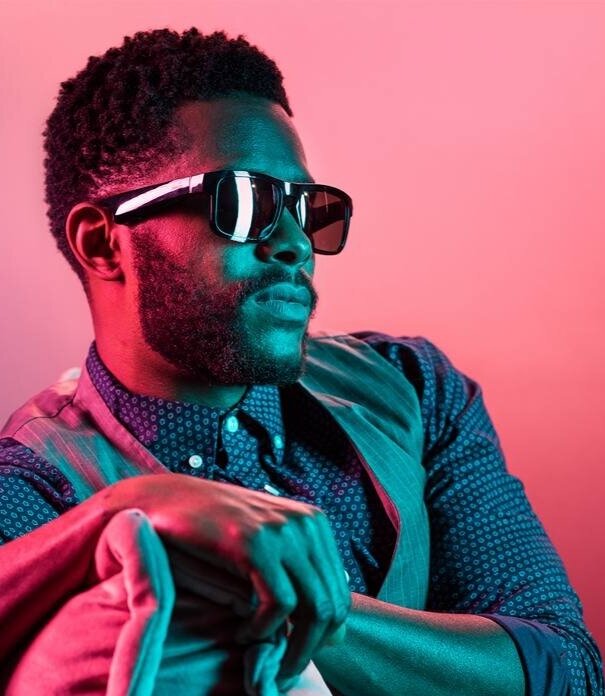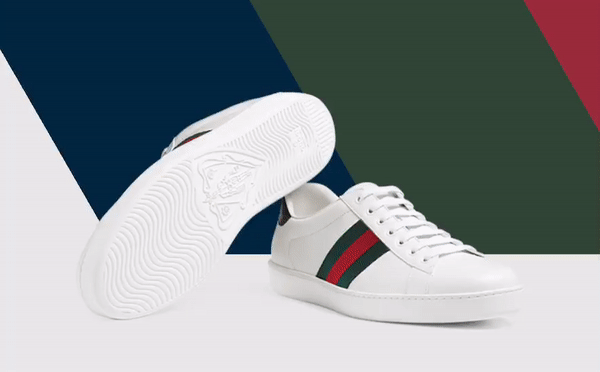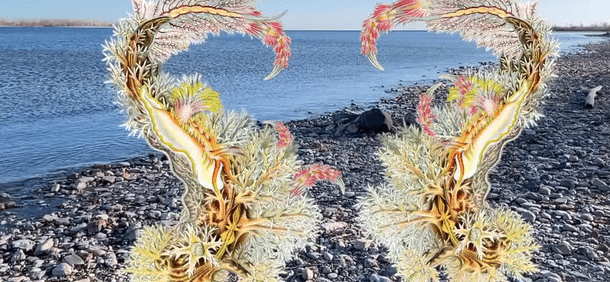AR Glasses

Design Guidelines for the Future of AR Eyewear
The future of Augmented Reality (AR) is sophisticated and beautiful. It enhances and is in sync with the physical world; it does not replace or supplant it. It does not overload; it aids and delights with elegance. It ignites and invites curiosity and creativity.
The future of AR is a fashionable pair of glasses for everyday use. We’re beginning to see glimpses of what that near future could look like and design is at the centre of it.
As I wrote in my book “Augmented Human,” this second wave of AR goes beyond a layering of digital information atop of your physical surroundings; it’s a more immersive, integrated, and interactive experience. It’s driven by a contextual understanding and interaction with the world, responsive to you. The virtual environment becomes a mirror to your being, adapting to your needs. Your surroundings become attuned, delivering a personalized, relevant, and meaningful experience.
Debuting in 2018, Bose’s AR “Frames” offered a fashionable, and contextually-aware audio experience on a lightweight pair of glasses that were comfortable for everyday wear. Frames paired with your smartphone via Bluetooth technology.
Using the glasses sensor (accelerometer, gyroscope), head orientation, and gesture data, developers could create new experiences based on user interactions like head gestures.
Possibilities included: Audio triggered based on your head orientation. Interacting through head nods, shakes, and touch gestures (like double-tapping). Pinning audio spatially relative to your location, and playing content based on your movement and position. All done with no camera.
Using the Otocast app, Frames encouraged discovery and exploration of the real world around you. Frames recognized your location and head orientation to provide more detail about points of interest and landmarks. The information was transmitted directly to your ears via audio for a heads up and hands-free experience. Similarly, the NaviGuide AR app provided location-based information such as Yelp! ratings and reviews for restaurants when you double-tapped Frames.
In addition to travel and tourism, Frames also offered experiences around health and fitness. The Golfshot app provided real-time GPS distances to the green as well as hole information for over 45,000 golf courses around the world. The Pear sports app provided fitness coaching where you could hear instructions via Frames and receive real-time feedback on your workout. The glasses could also connect to your Apple Watch for heart rate data. Frames moto was “connected not distracted.”
Bose Frames $249.95 USD
Bose unfortunately pulled the plug on its AR platform in June 2020, no longer supporting augmented audio capabilities on Frames. You can still however purchase Frames and use them without the AR features to do things like play music, make/take calls, and access your phone’s voice assistant.
More recently, South Korean eyewear designer Gentle Monster and Huawei launched the second generation of their smart eyewear collaboration, with 13 fashionable styles. The collection includes 3 types of optical glasses and 4 types of sunglasses. The functionality is similar to Bose Frames (without the AR capabilities), with dual speakers built-into the arms of the glasses.
Neither of these fashionable eyewear designs have a camera; the next step is displaying visuals in our line of sight.
The look and design of AR eyewear is highly important, but how and what we see through these glasses, and the design of that experience is absolutely critical. Adding visuals to such fashion conscious frames is a task that will require great care and consideration to avoid cognitive overload.
To do this, we’ll need to consider principles of Calm Technology, as discussed in “Augmented Human.” Calm Technology was a term coined by Mark Weiser at Xerox PARC in the 1990s, and can be summarized as technology that is invisible and natural to use; it doesn’t interrupt or get in the way of life. It happens in the background and appears when you need it.
This is how I see this next wave of AR evolving: it’s not about being lost in our devices, it’s about technology receding into the background so that we can engage in human moments, while being more deeply immersed in the real world that surrounds us.
Clear kayak. Photo credit: Jim Raycroft
Let’s consider the design of a transparent kayak for a moment. A clear kayak functions as a large open window, giving the illusion of the kayak (interface) disappearing. It creates a sense of immersion for the kayaker, via an invisible barrier, and fosters a feeling of being more connected to one’s surroundings.
This clear kayak is significant and symbolic of the opportunity for AR on eyewear, beyond the experiences we are accustomed to on our smartphones today.
When I first began designing AR experiences 15 years ago, we were still tethered to the desktop via a computer monitor and webcam. The technology eventually migrated to smartphones and tablets, and today it’s moving to eyewear and beyond. The AR screen will ultimately disappear and we will be immersed directly in this new hybrid reality.
Here are 5 design principles I envision encouraging best practices for AR experiences on eyewear:
Relevant
Strive for contextual experiences that are connected to and enhance a person’s surroundings. Consider the user’s location, actions, and time of day.
Rooted in Reality
Aim for at least 60% of the real world environment to be visible. Be mindful of AR content fully blocking out the user’s physical surroundings.
Enable with Ease
Avoid cluttering the user’s field of view with visual information. Use spatial audio and/or haptics (touch feedback) on connected wearables when appropriate to minimize cognitive overload, particularly with notifications.
Discover with Delight
Encourage exploration of the user’s surroundings with thoughtful graphics and multi-sensory cues that inspire, not distract. Use mini apps (like App Clips) to help people accomplish everyday tasks quickly with minimal effort. Only send relevant notifications in response to user actions and surroundings.
Move Mindfully
Minimize visual content when directing people through a physical space, particularly in high traffic environments. Define and use gestures with intention.
Weiser declared, “The scarce resource of the twenty-first century will not be technology; it will be attention.” As we continue to augment our environments, bodies, and minds with new technologies, our directed focus on the things that truly matter to us will be key.
We’re at a pivotal moment in AR’s evolution where we must ask, now that we can design anything, what will we create? It is my hope that we will use these newfound capabilities to best enrich, evolve, and elevate humankind.
And of course, making it fashionable in the process.
Need expert help with your digital strategy? Learn more about my consulting services here.
Book me as a speaker for your next event.
Get your copy of “Augmented Human” (available worldwide in 5 languages) here.
Follow me on Twitter: I’m @ARstories









